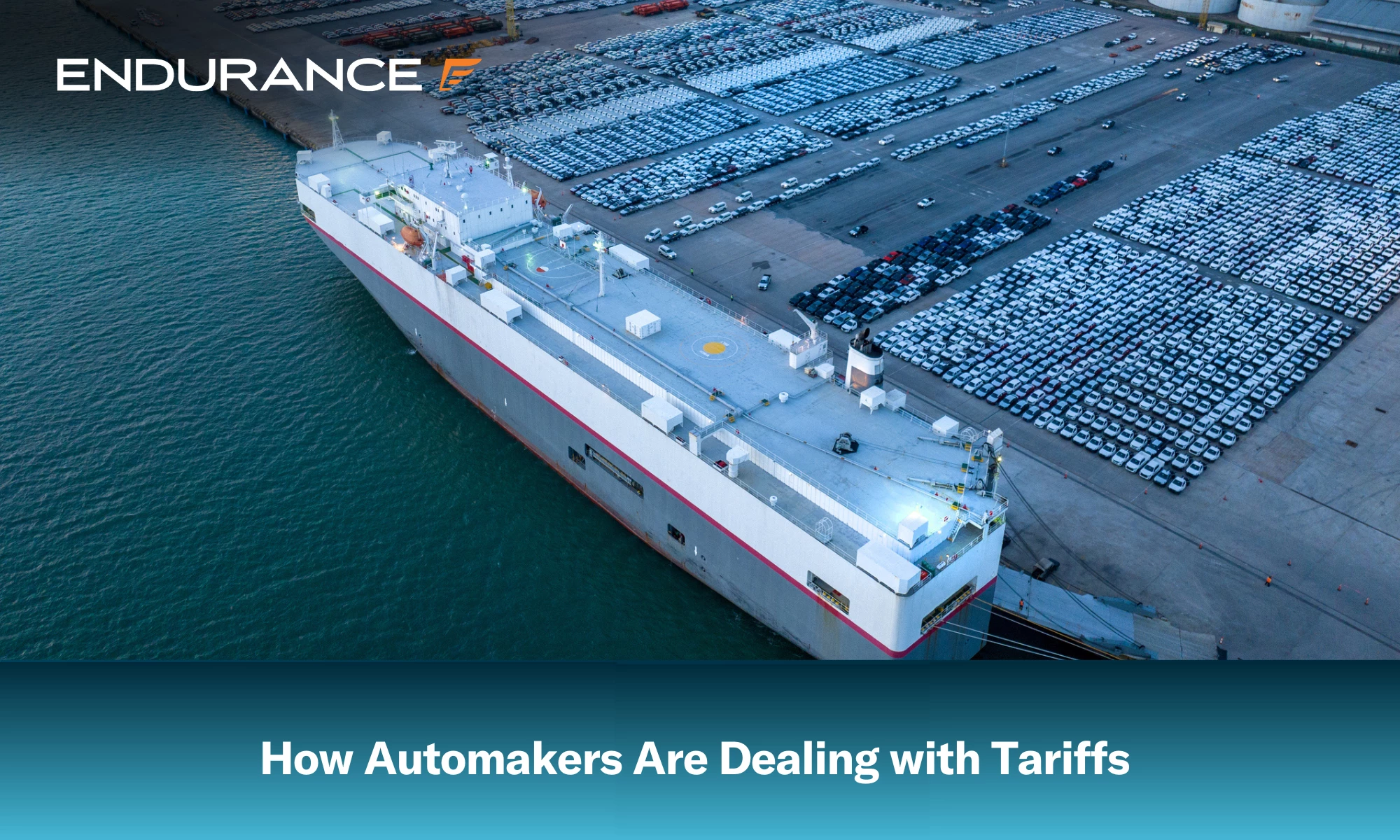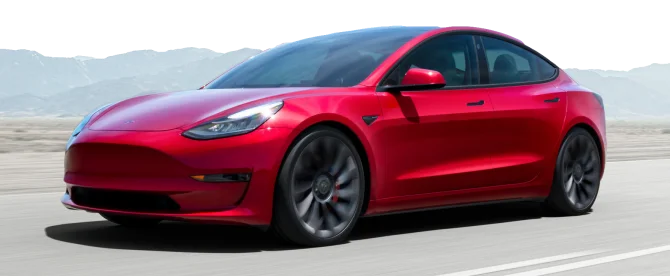Get this deal! Call now.
Speak with a vehicle protection plan specialist and get $300 off any new contract instantly.
Call 866-678-4172
or scan the code below


The White House signaled a shift in its approach to tariffs and the U.S. auto industry with President Donald Trump’s April 29 signing of new executive orders. The action follows intense lobbying by domestic automakers for relief against levies that could raise the price of new cars and parts sold in America. Manufacturers welcomed the modifications, but only to a point.
Ford CEO Jim Farley told AP, “The changes this week on tariff plans will help ease the impact of tariffs for automakers, suppliers, and consumers.” However, he added, “We need to continue to work closely with the administration on a comprehensive set of policies to support our shared vision of that healthy and growing auto industry. And we are not there yet.”
In a recent letter to shareholders, General Motors CEO Mary Barra echoed a similar sentiment: “…maintaining our strong dialogue with the administration on trade and other policies as they continue to evolve.” But she added a dose of reality by announcing that tariffs could slice the company’s 2025 profits by up to $5 billion.
In a May 1 briefing with the Automotive Press Association, Cox Automotive chief economist Jonathan Smoke summed up the revised tariffs as “just taking a bad situation and making it slightly less worse.”
While it might take a trade policy or tariffs expert to unravel all the aspects of these import levies, the White House’s most recent actions cover two critical areas. Primarily, cars built in the U.S. are no longer subject to “stacking” tariffs, where multiple duties are added to the same vehicle or component. For instance, carmakers no longer fear being hit with tariffs for foreign-made aluminum or steel, essential automobile components. Secondly, the Trump administration is establishing a reimbursement process that compensates manufacturers for a portion of levies imposed on U.S.-built vehicles with imported parts.
A White House fact sheet on the changes says, “The proclamation modifies the tariff action on automobiles and automobile parts by encouraging manufacturers to assemble their automobiles in the U.S., thereby reducing American reliance on imports of automobiles and automobile parts.”
The document spells out the practical applications of the tariff adjustments. For the next year, through April 30, 2026, automakers will receive a rebate equal to 3.75% of the MSRP of the automaker’s U.S. production. The amount would drop to 2.75% for production the following year (May 1, 2026, to April 30, 2027). The White House states, “These percentages reflect the duty that would be owed when a 25% duty is applied to 15% of the value of a U.S.-assembled automobile in the first year, and to 10% in the second year.”
The administration cites an example of an American-made car with 85% U.S. or USMCA components. USMCA, or United States-Mexico-Canada Agreement, is the successor to the North American Free Trade Agreement (NAFTA) and was enacted in 2020 under the first Trump administration. Under this scenario, the automaker would not owe any tariffs in the first year. In another situation, a manufacturer building a car with 50% U.S. or USMCA parts and 50% imported components would pay duties on 35% of the imported content for the first year.
In short, the government is giving automakers a two-year window to move component production to the U.S.
Beyond automaker CEOs, other industry leaders have chimed in about the U.S. easing some tariffs. Tracy Fuerst, an executive at Magna International, a global parts and vehicle assembly company, told Automotive News that the tariff adjustments are “a positive step toward restoring clarity and predictability for the auto industry.” She added, “Any move to reduce compounding tariff impacts is helpful for suppliers, automakers, and consumers alike.”
Sam Fiorani, vice-president of global vehicle forecasting at AutoForecast Solutions, contrasts this optimism, telling Automotive News, “This is an industry that has built up with a global supply chain, and the tariffs don’t seem to take that into account.” He also remarked, “The automakers are the focus, not the hundreds of suppliers that need to be part of this conversation.”
The reduced tariffs come amid increasing geopolitical turmoil and a global trade environment that has only recently recovered from recent disruptions. The COVID-19 pandemic highlighted the risks of planet-wide supply chains and the inability of any automaker to rely on a single country for production.
The introduction of increased U.S. tariffs has already had a far-reaching effect on vehicle production for the American market. General Motors announced in early May that it was scaling back Canadian output of its best-selling Chevrolet Silverado pickup. Assembly at the company’s Oshawa facility in Ontario would be reduced from three shifts to two, decreasing annual production by about 50,000 trucks. GM Authority quotes GM Canada President Kristian Aquilina as saying the measure results from “the evolving trade environment.”
America’s largest automaker isn’t alone in scaling back manufacturing. Last month, Stellantis announced a temporary production pause at some Canadian and Mexican factories in response to the increased tariffs. Meanwhile, Nissan has stopped accepting orders for some Infiniti SUVs built in Mexico.
It’s too early to tell how relaxing some auto tariffs will impact consumers. Before the White House announcement, automakers were taking several different approaches. Reuters reports that Volkswagen has instructed dealers to add an import fee surcharge to affected vehicles. Meanwhile, Porsche and Audi, also part of the VW sphere, took a two-pronged approach: speeding up shipments to the U.S. before the April 3 deadline and holding later-arriving inventory in port, hoping for tariff relief (which is not part of the latest modifications).
Outside of the restructured tariffs and manufacturer rebates, industry analysts predict that new car shoppers will face higher costs. In an early April analysis, Cox Automotive forecast that vehicles under $30,000 were most likely to be impacted by tariffs. The firm predicts that a 25% tariff could impact cars like the Chevrolet Trailblazer and Trax, Honda Civic and HR-V, Nissan Sentra, and Toyota Corolla, with a 10%-15% bump to window sticker prices.
One day after Trump’s latest executive orders on tariffs, Cox Automotive analyst Erin Keating commented, “All signs point to higher prices this summer, as existing ‘pre-tariff’ inventory is sold down to be eventually replaced with ‘tariffed’ inventory.” She added, “How high prices rise for consumers is still very much to be determined, as each automaker will handle the price puzzle differently.”
While the Trump administration aims to incentivize more domestic production, automotive manufacturing experts caution that significant manufacturing shifts will take years to materialize. Conference Board economist Erin McLaughlin told the Financial Times, “It will take between three and ten years in most cases to build a new manufacturing facility in the U.S.”
The timeline starts with securing capital and then moves on to planning, permitting, and construction. The automaker must also equip and staff the facility, while securing transportation logistics to move the finished products. Furthermore, a sudden rush of new factories could tax engineering and construction, increasing this timeline.
The White House also justifies the tariffs as stronger domestic manufacturing strengthens the U.S. defense industrial base. “This modified action will more effectively address the threat to national security by reducing reliance on foreign manufacturing, strengthening U.S. vehicle assembly operations, boosting domestic R&D, and creating American jobs, all of which are essential to a strong defense industrial base,” states the White House fact sheet.
The administration points to concerning trends in the automotive sector: In 2024, Americans purchased approximately 16 million cars, SUVs, and light trucks, with 50% of these vehicles being imports (8 million). Of the other 8 million cars assembled in America, the U.S. content was likely closer to 40%, meaning only about 25% of vehicle content purchased by Americans can wear a “Made in America” label.
Additionally, the U.S. recorded a trade deficit in automobile parts reaching $93.5 billion in 2024, while employment in automotive parts manufacturing declined by 34% since 2000, losing 286,000 jobs.
Whether automakers and consumers will see an additional relaxation of tariffs remains to be seen, creating uncertainty. In addition, the federal government has yet to release guidance on how the Trump tariffs on USMCA-compliant imported vehicles should be calculated, adding complexity to the situation. While the auto industry has a long history of adapting to changing regulations (such as emission controls and safety requirements), the current environment is uncharted waters for all the players.
Adapting to this shift in trade policy requires time and regulatory predictability. The unanswered questions are how fast these new policies stabilize and if the interim uncertainty may become unsustainable for some manufacturers. Some brands may choose to leave the market or discontinue some models.
With $80 billion worth of car parts imported from China alone, car owners could face rising repair costs, especially those without factory warranty protection for their vehicles. Savvy consumers are discovering the advantages of an extended warranty in these situations. An Endurance Warranty auto protection plan (also called an extended car warranty or vehicle service contract) protects against breakdowns and surprise repair bills. Best of all, coverage cost is locked in from the start, no matter how expensive auto parts become.
Learn more by requesting a FREE quote or visiting the Endurance online store for instant plan and pricing details. Call (800) 253-8203 to speak with a plan advisor for custom coverage options.
Check out the Endurance blog for timely information about warranties, consumer advice, DIY repairs, vehicle reviews, and more.

We've received your vehicle information and will contact you shortly with your quote.
— OR —
Start shopping for a coverage plan now.

We're here to make sure you get the most comprehensive EV protection. That's why we've partnered with Xcelerate Auto to offer you transparent and dependable Tesla coverage.
Want us to contact you about XCare coverage for your Tesla?



Your protection is our top priority. Your quote is in progress and you will
receive a confirmation
email shortly.


Speak with a vehicle protection plan specialist and get $300 off any new contract instantly.

Call for $300 off any new plan!
By clicking the button, you consent to Endurance using automated technology to call, email, and text you using the contact info above, including your wireless number, if provided, regarding auto protection or, in California, mechanical breakdown insurance. You also agree to the Endurance Privacy Policy and Terms and Conditions. Consent is not a condition of purchase, and you can withdraw consent at any time. Message and data rates may apply.


Speak with a vehicle protection plan specialist and get $300 off any new contract instantly.
Call 866-678-4172
or scan the code below



Simply fill out the information below and we will follow up fast with your free no-obligation quote.
By clicking the button, you consent to Endurance using automated technology to call, email, and text you using the contact info above, including your wireless number, if provided, regarding auto protection or, in California, mechanical breakdown insurance. You also agree to the Endurance Privacy Policy and Terms and Conditions. Consent is not a condition of purchase, and you can withdraw consent at any time. Message and data rates may apply.

To speak to a vehicle protection plan specialist and get $300 off any new contract instantly
Scan the code below
Dave is an automotive journalist combining a deep passion for cars, hands-on mechanical experience, and dealership insight. His writing primarily focuses on consumer auto advice and enthusiast pieces. A regular contributor to SlashGear.com and other leading automotive platforms, Dave earned his BA in Journalism from The George Washington University.